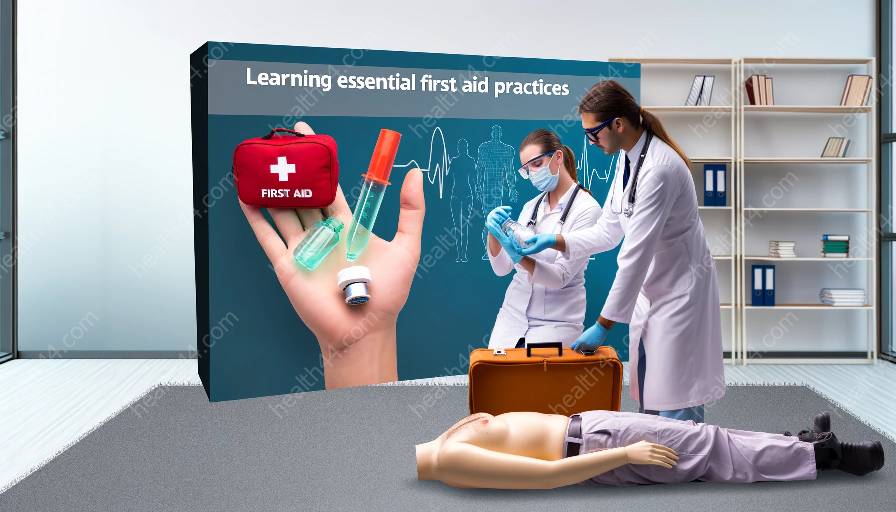Proper first aid treatment for cuts, wounds, and burns is essential for minimizing infection and promoting healing. This comprehensive guide will discuss effective treatment techniques while emphasizing the importance of health education and medical training.
Cuts
Cuts can occur from sharp objects, such as knives or glass. Proper treatment is crucial to prevent infection and promote healing. Follow these steps to effectively treat cuts:
- Clean the Area: Use mild soap and water to cleanse the cut. Avoid using hydrogen peroxide or alcohol, as these can further damage the tissue.
- Control Bleeding: Apply gentle pressure with a clean cloth or bandage to stop the bleeding. If the bleeding is severe, seek medical attention immediately.
- Apply Antibiotic Ointment: Once the cut is clean and dry, apply a thin layer of antibiotic ointment to prevent infection.
- Cover the Cut: Use a sterile bandage or gauze to cover the cut and protect it from further injury or contamination.
Wounds
Wounds can range from minor scrapes to deep puncture injuries. Proper treatment helps prevent complications and supports healing. Here's how to approach wound care:
- Assess the Wound: Evaluate the size and depth of the wound to determine the appropriate course of action. Deep or severely dirty wounds may require medical attention.
- Cleanse the Wound: Thoroughly wash the wound with mild soap and water. Use a clean cloth to remove any debris or dirt.
- Control Bleeding: Apply gentle pressure to the wound using a sterile bandage or cloth. Elevate the wound if possible to reduce bleeding.
- Apply Dressing: Once the wound is clean and dry, apply a sterile dressing and secure it with a bandage.
Burns
Burns can result from exposure to heat, chemicals, electricity, or radiation. Proper first aid for burns can minimize damage and support healing. Follow these steps when treating burns:
- Assess the Burn: Determine the severity of the burn. First-degree burns require different treatment than second-degree or third-degree burns.
- Cool the Burn: Use cool running water to gently cool the affected area for several minutes. Avoid using ice, as it can further damage the skin.
- Apply Aloe Vera Gel: For minor burns, applying aloe vera gel can soothe the skin and promote healing.
- Protect the Burn: Use a sterile gauze or non-adhesive bandage to protect the burn from further injury. Avoid using cotton balls or other materials that can stick to the burn.
Education and Training
It's important to emphasize the significance of health education and medical training when it comes to treating cuts, wounds, and burns. Individuals should be informed about the proper first aid techniques and potential risks associated with improper treatment. Medical professionals, including first responders and healthcare providers, should receive comprehensive training to effectively assess and treat these injuries.
Conclusion
Effective first aid for cuts, wounds, and burns plays a critical role in promoting healing and preventing complications. By following the outlined treatment procedures and emphasizing the value of health education and medical training, individuals can effectively manage these injuries and contribute to overall community well-being.



